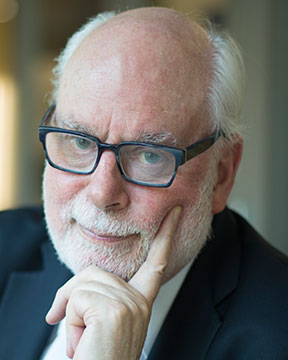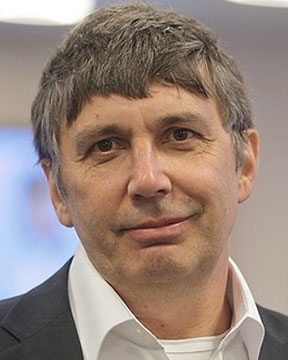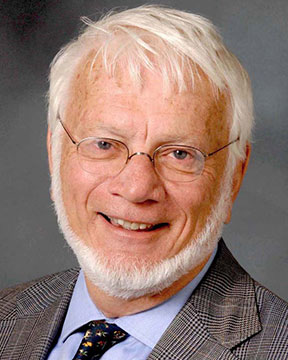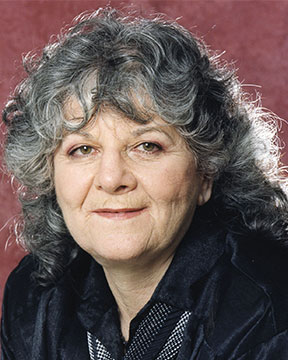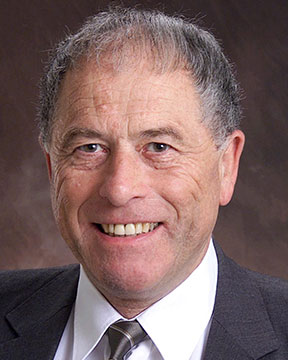ORALS
SESSION: AdvancedMaterialsMonPM3-R6
| 4th Intl. Symp. on New and Advanced Materials and Technologies for Energy, Environment and Sustainable Development |
| Mon Nov, 5 2018 / Room: Guaratiba (60/2nd) | |
| Session Chairs: Krzysztof Wierzbanowski; Andrzej Baczmanski; Session Monitor: TBA |
17:40: [AdvancedMaterialsMonPM313] Invited
Microstructure, Texture and Mechanical Characteristics of Polycrystalline Copper After Asymmetric Rolling Agnieszka
Uniwersał
1 ;
Krzysztof
Wierzbanowski1 ; Mirosław
Wrobel
1 ; Sebastian
Wronski
1 ; Marcin
Wronski
1 ;
0 ;
1AGH University of Science and Technology, Kraków, Poland;
Paper Id: 200
[Abstract] In the recent years, asymmetric rolling has attracted the attention of metallurgists and material scientists. This deformation process has a number of advantages: it can be used to improve material properties as well as some technological rolling parameters [1-5]. This geometry of deformation is relatively easy to implement on existing industrial rolling mills, and it can provide large volumes of a material. The study of microstructure, crystallographic texture, and stored energy in asymmetrically rolled polycrystalline metals (copper, aluminum and titanium) are presented in this work. The characteristics above were examined using the EBSD technique, X-ray diffraction, and calorimetric measurements. The mechanical aspects of the process were examined experimentally and studied using the Finite Element Method. The rolling asymmetry was realized using either two identical rolls rotating with different angular velocities, or two rolls with different diameters rotating with the same angular velocity. <br />It was found that asymmetric rolling leads to important microstructure modifications, grain refinement, texture rotation and its homogenization. The mechanical strength and hardness of the processed material are improved. The estimated stored energy accumulated during deformation is higher after asymmetric rolling, which influences the subsequent annealing process. The material bending, resulting in this process, can be partly controlled by an appropriate choice of rolling process parameters. The rolling normal force is reduced and distribution of torques between two work rolls is modified in asymmetric rolling process, as compared with the symmetric one.
References:
[1] M. Wronski, K. Wierzbanowski, S. Wronski, B. Bacroix, P. Lipinski, Int. J. Mech. Sci., 87 (2014) 258-267\n[2] M. Wronski, K. Wierzbanowski, S. Wronski, B. Bacroix and P. Lipinski, Arch. Metall. Mater., 62 (2017) 1991-1999\n[3] M. Wronski, K. Wierzbanowski, M. Wrobel, S. Wronski, B. Bacroix, Met. Mater. Int., 21 (2015) 805-814\n[4] A. Uniwersal, M. Wronski, M. Wrobel, K. Wierzbanowski, A. Baczmanski, Acta Mater., 139 (2017) 30-38\n[5] A. Uniwersal, M.Wrobel, K. Wierzbanowski, S. Wronski, M. Wronski, I. Kalemba-Rec, T. Sak, B. Bacroix, Mater. Charact., 118 (2016) 575-583
SESSION: AdvancedMaterialsMonPM3-R6
| 4th Intl. Symp. on New and Advanced Materials and Technologies for Energy, Environment and Sustainable Development |
| Mon Nov, 5 2018 / Room: Guaratiba (60/2nd) | |
| Session Chairs: Krzysztof Wierzbanowski; Andrzej Baczmanski; Session Monitor: TBA |
18:05: [AdvancedMaterialsMonPM314] Invited
Intergranular Stresses and Micro-damage Process in Two-phase Materials Studied Using Diffraction and Self-consistent Model Andrzej
Baczmanski1 ; Elzbieta
Gadalinska
2 ; Sebastian
Wronski
3 ; Przemyslaw
Kot
3 ; Christian
Scheffzuek
4 ; Gizo
Bokuchava
4 ; Lea
Le Joncour
5 ; Yuchen
Zhao
5 ; Chedly
Braham
6 ;
1AGH University of Science and Technology, Faculty of Physics and Applied Computer Science, Krakow, Poland;
2Institute of Aviation, Warszawa, Poland;
3AGH-University of Science and Technology, WFiIS, Krakow, Poland;
4FLNP, Joint Institute for Nuclear Research, Dubna, Russian Federation;
5ICD-LASMIS, Universite de Technologie de Troyes, Troyes, France;
6PIMM, Arts et MA©tiers ParisTech (ENSAM), Paris, France;
Paper Id: 213
[Abstract] As a selective and non-destructive method, the diffraction method applied for in-situ tensile test is particularly useful in analysing the evolution of phase behaviour during elastic and elasto-plastic deformation of polycrystalline materials [1-3]. This experimental technique enables determination of the mechanical properties for group of grains inside the gauge volume defined by diffraction condition. The measurements are carried out using selected hkl reflections during tensile/compression tests. In the case of multiphase polycrystalline materials, the measurement of separate diffraction peaks enables independent investigations of the mechanical behaviour of each phase.<br />In this work, a methodology combining diffraction experiments and self-consistent calculations was used to study behaviour of phases within two-phase polycrystalline materials (Al/SiCp composite and duplex austenitic-ferritic steel). Special attention was paid to the role of first and second order stresses on the yield stresses of the phases, as well as on the evolution of these stresses during the deformation process. The stresses were determined from lattice strains measured in situ during tensile tests and after sample unloading [4,5] using neutron diffraction (JINR, Dubna, Russia and ISIS, RAL, UK) and diffraction of X-ray synchrotron radiation (ID15B, ESRF, Grenoble, France).<br />Comparison of the elasto-plastic self-consistent model with measured lattice strains allowed the determination of micro-mechanical properties of each phase in two-phase polycrystalline materials. The partitioning of the load between phases were correctly predicted by the self-consistent model. It was shown that the developed version of this model can be used to predict the consequences of damage processes occurring in a given phase. <br />The experimental and model results obtained in this work were used to study slip on crystallographic planes, localisation of stresses in polycrystalline grains [4,5] and initiation of micro-damage [6] occurring during plastic deformation.
References:
[1] M.R. Daymond, H.G. Priesmeyer, Acta Mater. 50 (2002) 1613a-1623.\n[2] M.L. Young, J.D. Almer, M.R. Daymond, D.R. Haeffner, D.C. Dunand, Acta Mater. 55 (2007) 1999-2011.\n[3] D. Gloaguen, G. Oum, V. Legrand, J. Fajoui, S. Branchu, Acta Mater. 61 (2013) 5779-5790.\n[4] A. Baczmański, R. Levy-Tubiana, M.E. Fitzpatrick and A. Lodini, Acta Mater., 52 (2004) 1565-1577.\n[5] A. Baczmanski, L. Le Joncour, B. Panicaud, M. Francois, C. Braham, A. M. Paradowska, S. Wroński, S. Amara and R. Chirone, J. Appl. Cryst, 44 (2011) 966-982.\n[6] A. Baczmański, Y. Zhao, E. Gadalińska, L. Le Joncour, S. Wroński, C. Braham, B. Panicaud, M. Francois, T. Buslaps, K. Soloducha M., Int. J. Plasticity 81 (2016) 102-122.
19:30 PM Dinner



